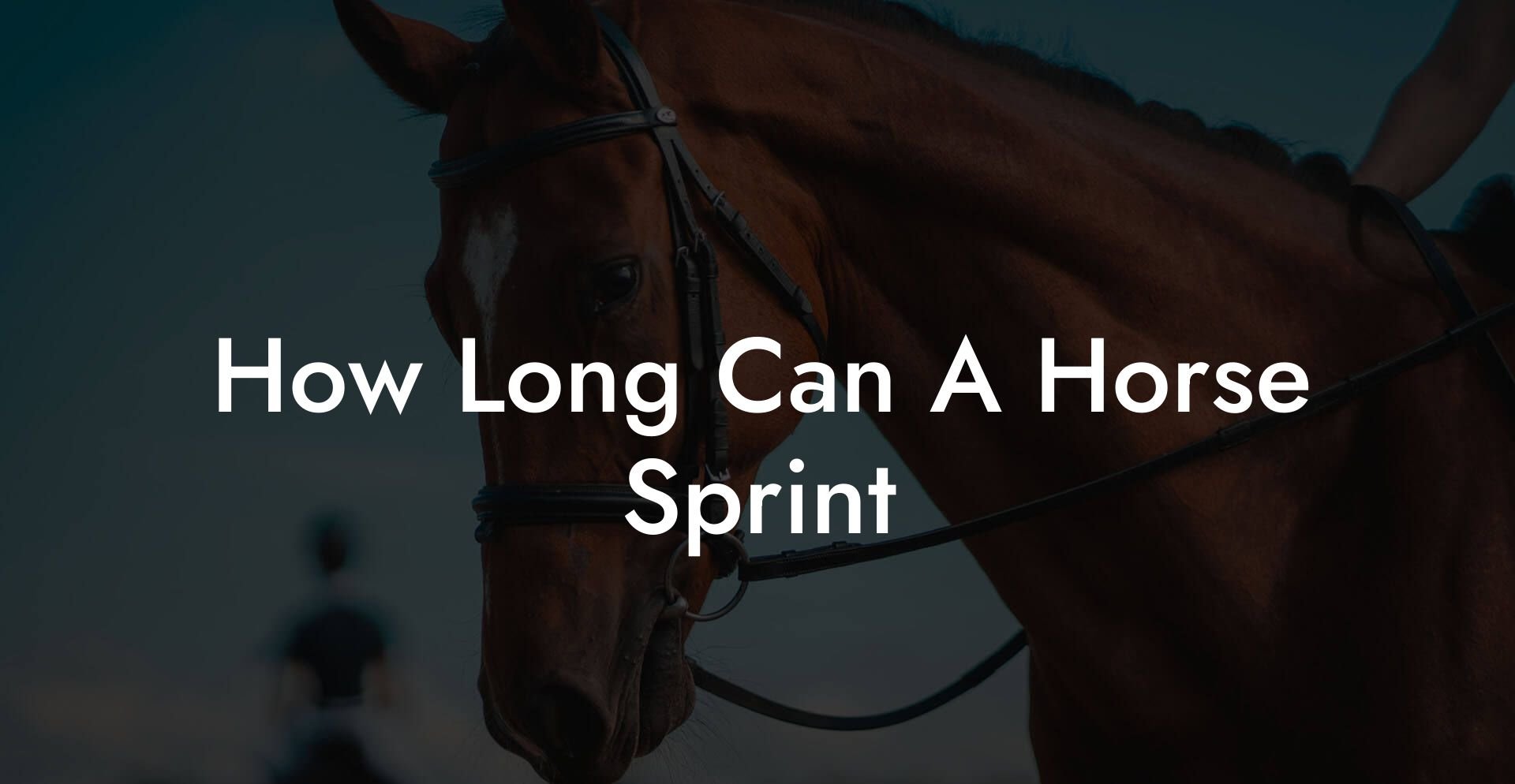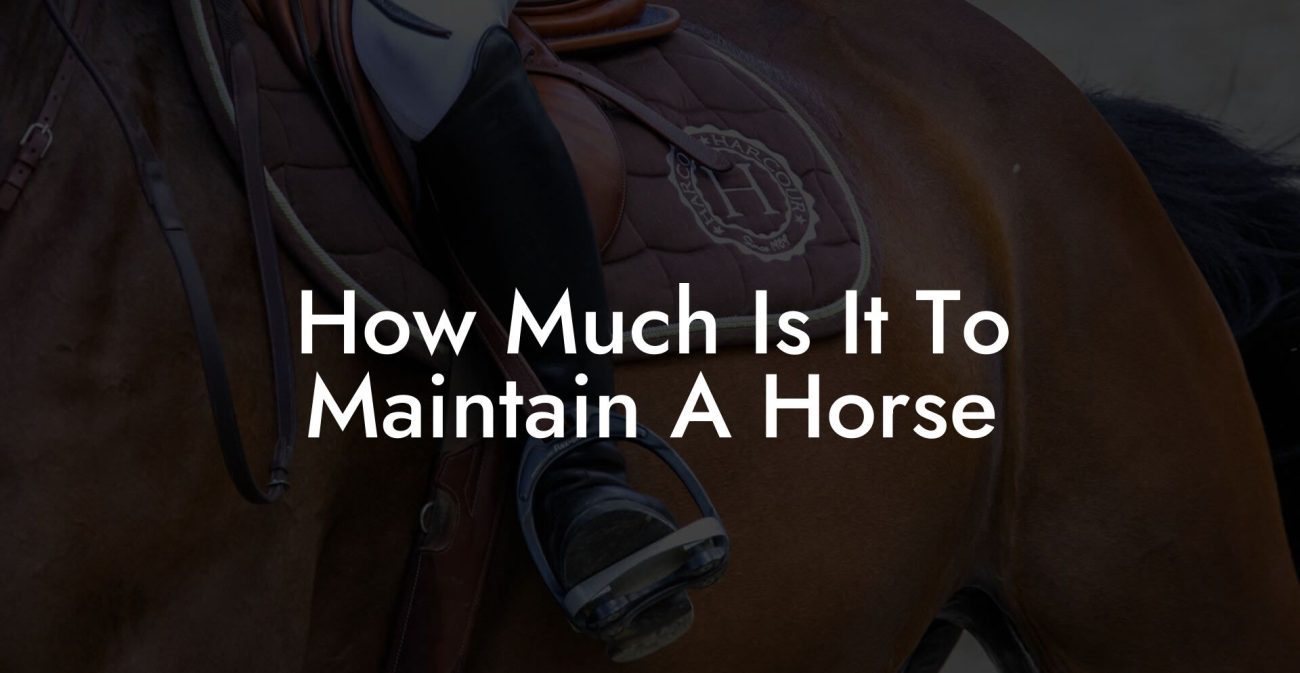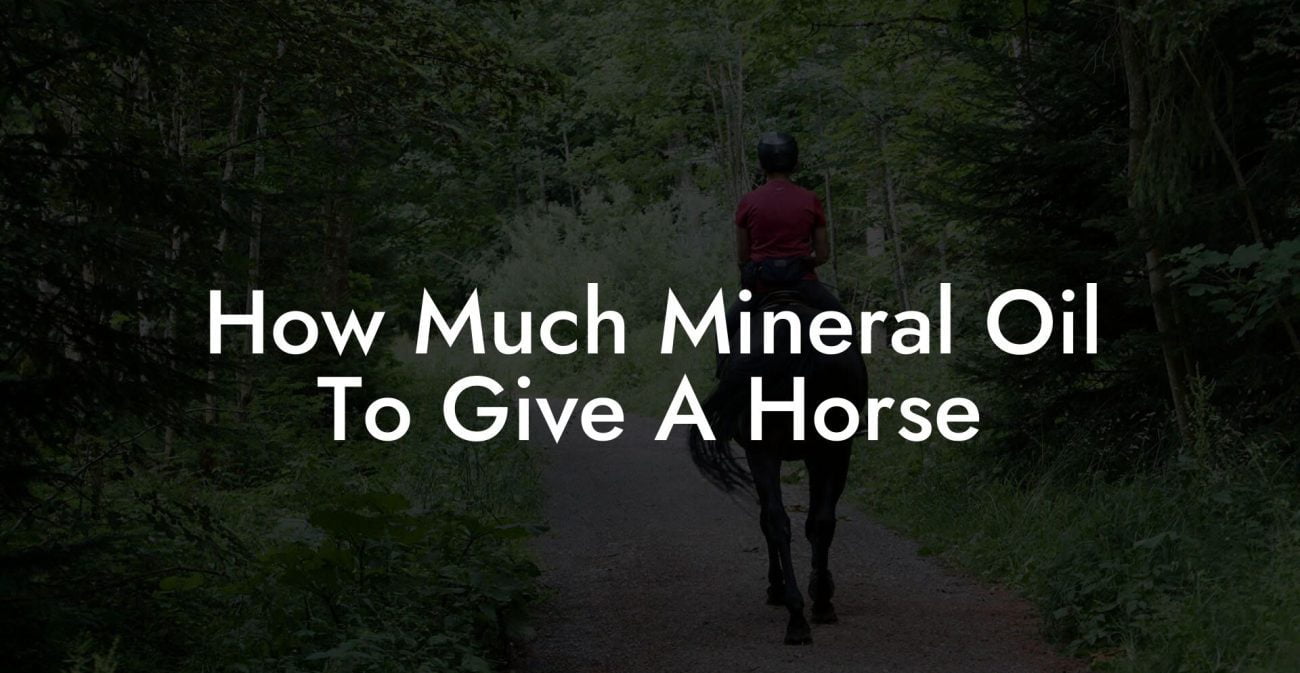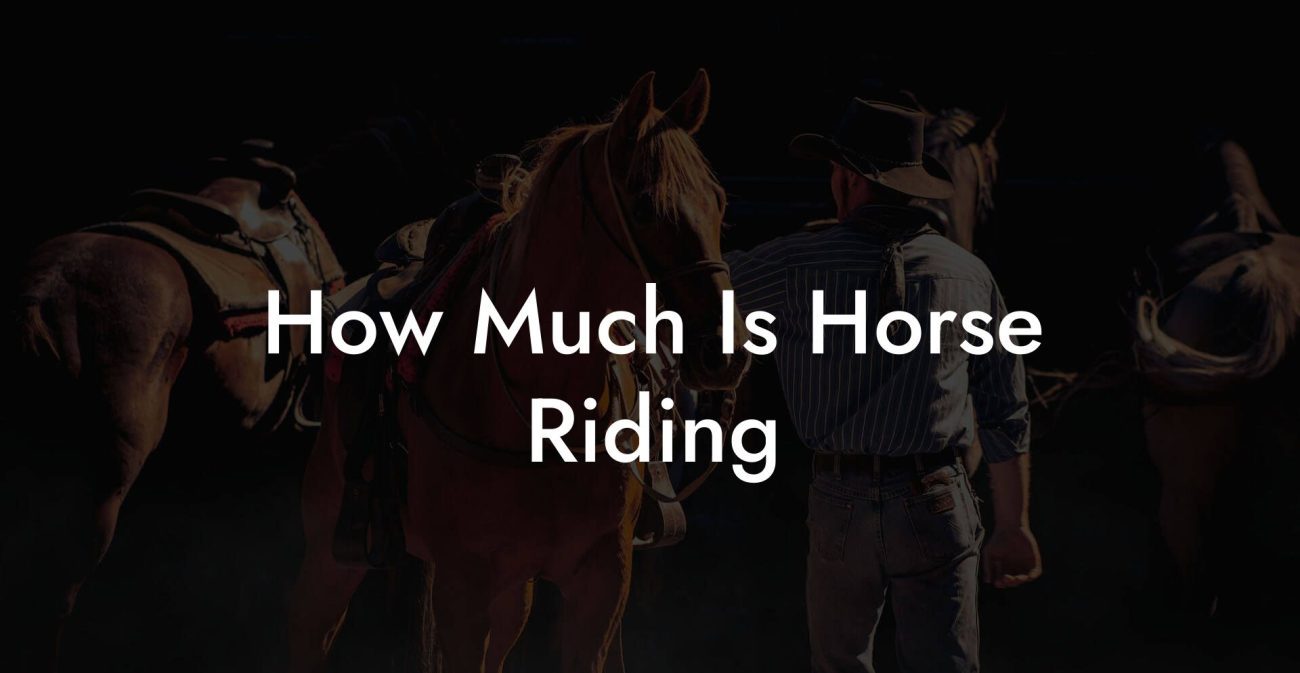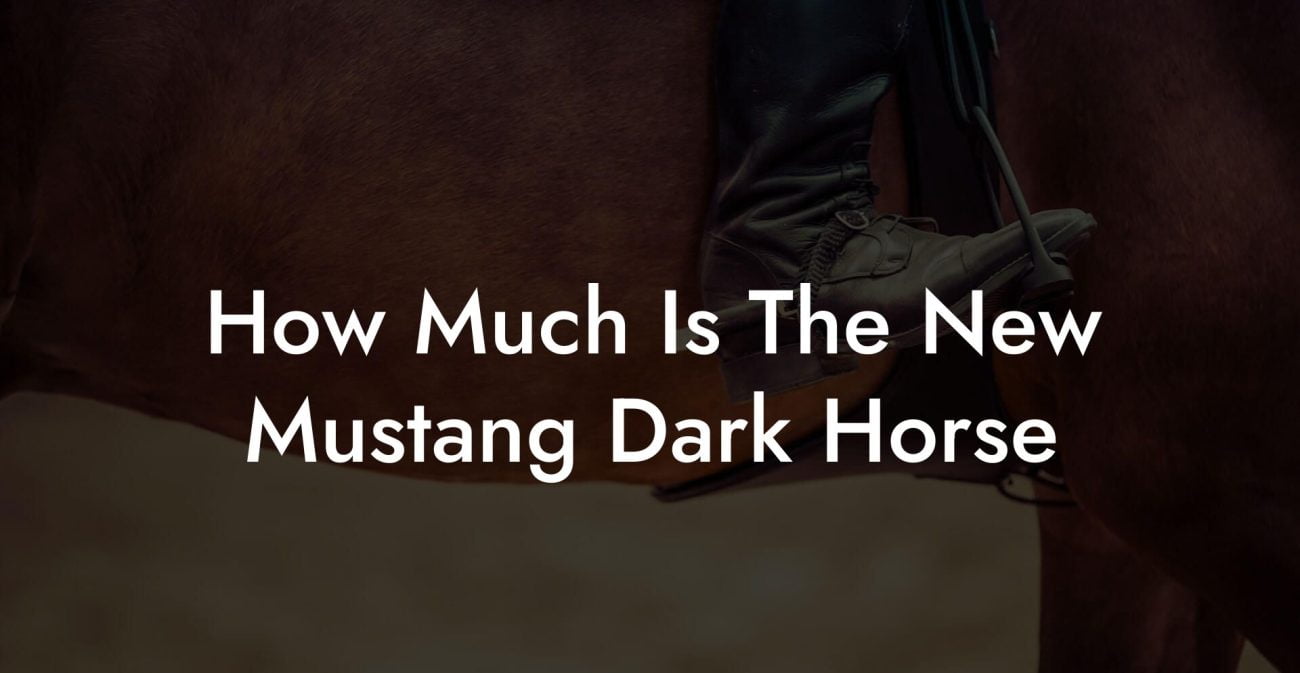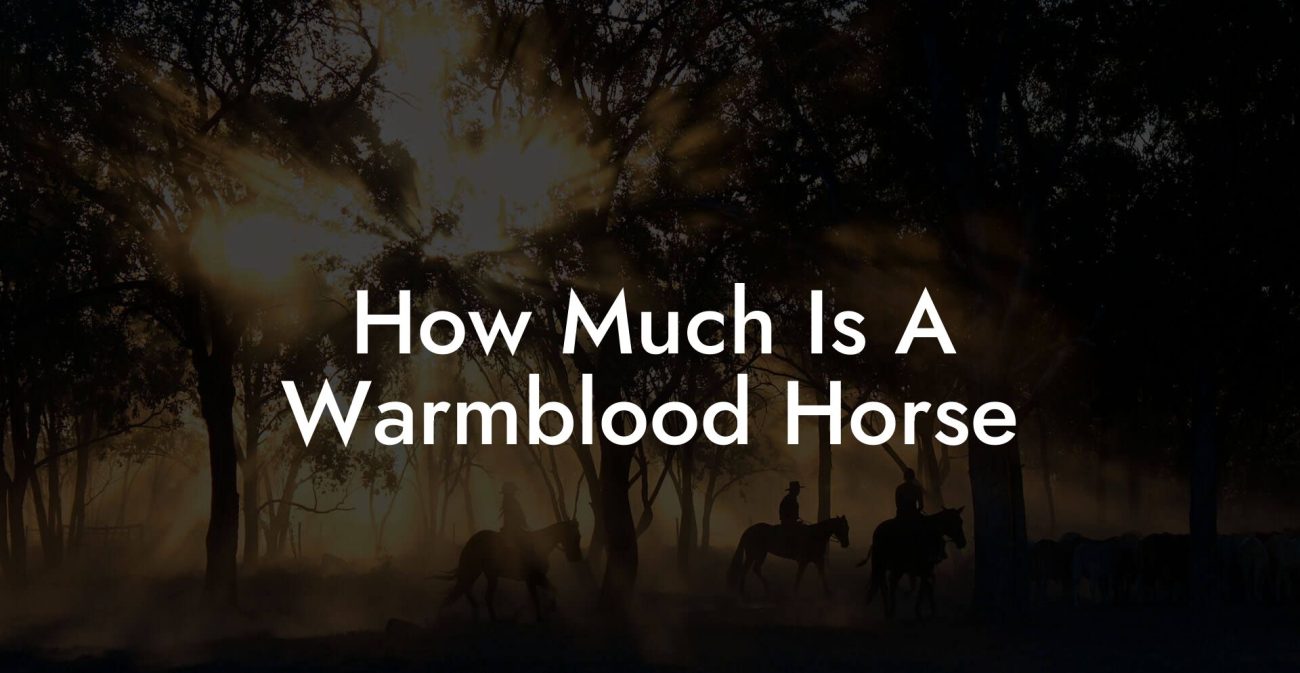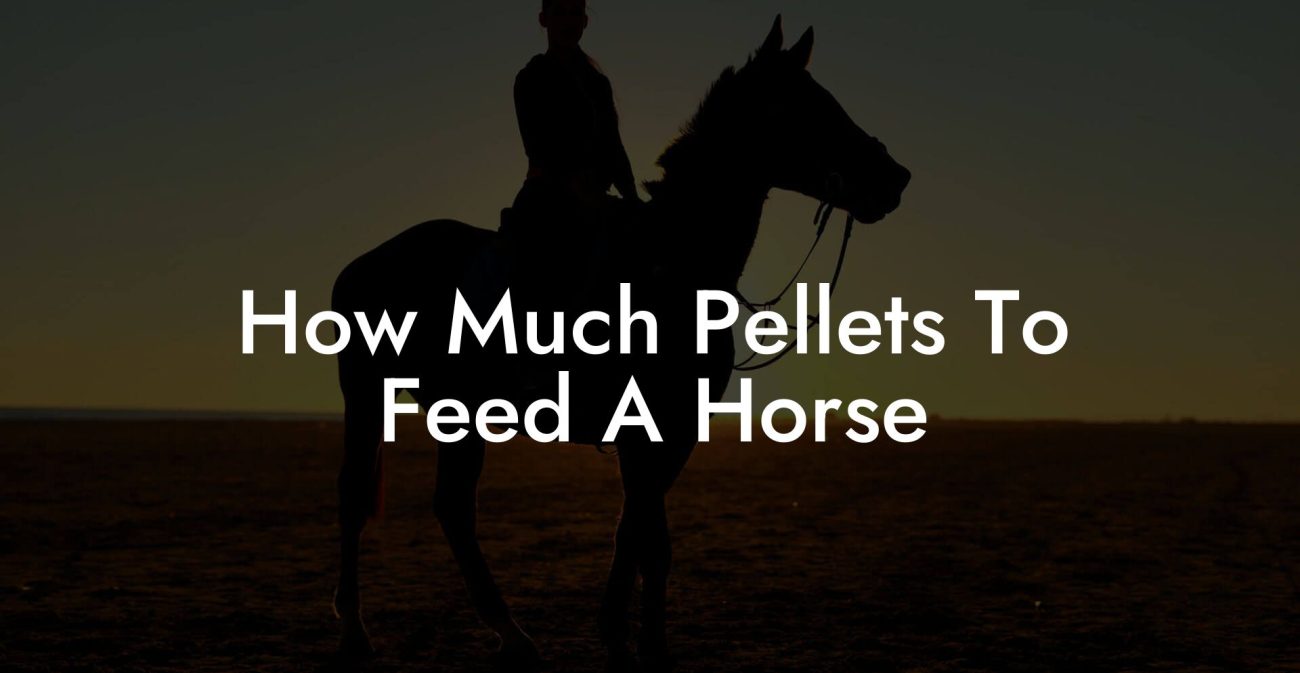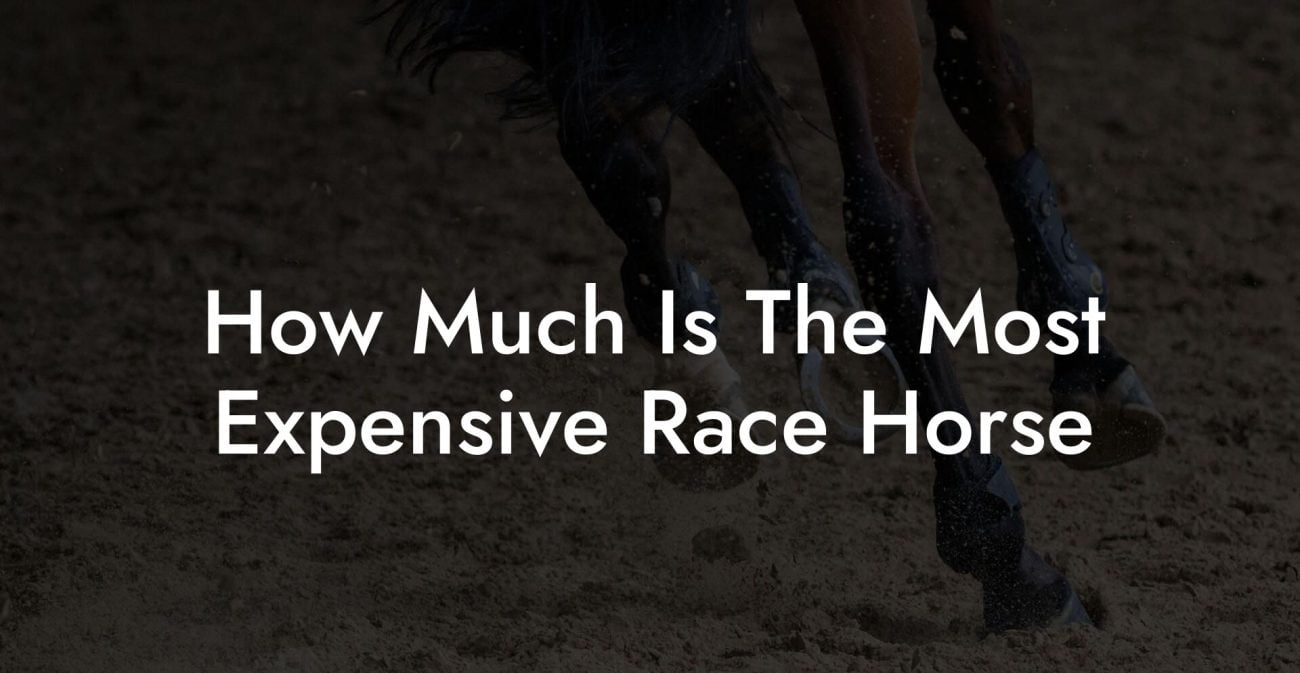Ever wondered if your majestic equine friend could break the sound barrier on the track? While we may not have horses outpacing cheetahs (yet), the sheer power and speed of a sprinting horse is nothing short of awe-inspiring. From the thunder of hooves on a racetrack to the developing bond between rider and steed during an energetic sprint, this in-depth guide will take you on a wild ride through the realm of equine speed. Buckle up as we dive into the question on every rider’s mind: "How long can a horse sprint?" Get ready for surprising insights, science-backed explanations, and training tips that might just make your heart race faster than your horse!
Quick Links to Useful Sections
- Understanding the Majesty of a Horse's Sprint
- The Science of Speed: Horse Physiology Explained
- Sprint vs. Endurance: When Horses Push Their Limits
- Key Factors Affecting a Horse's Sprint Duration
- Training Techniques to Unlock Equine Speed
- The Role of Genetics and Breed in Sprinting Ability
- Holistic horse care: Fueling the Sprint Performance
- Real-Life Equine Sprinting Stories: Record-Breaking Moments
- Creating a Personalized Horse Training Program for Sprinting
- Step 1: Comprehensive Evaluation
- Step 2: Setting Realistic, Achievable Goals
- Step 3: Integrating Cross-Training Movements
- Step 4: Consistent Monitoring and Adjustments
- Step 5: Balancing Intensity with Recovery
- Resources and Community Support: Your Next Steps
- Equine Sprinting FAQs: Your Questions Answered
- Your Journey to Empowered Equine Speed
Understanding the Majesty of a Horse's Sprint
Horses have captivated human imagination for thousands of years with their speed, power, and beauty. A sprint isn’t just a burst of velocity, it’s a symphony of strength, coordination, and raw athleticism. So, how long can a horse sprint? The answer lies in the intricacies of equine anatomy, training, and evolution.
At its core, a horse’s sprint is a complex interplay of muscular power, cardiovascular endurance, and precise movement mechanics. Unlike endurance gallops that cover long distances, a sprint is a short, explosive outburst of speed. Understanding this explosive action not only deepens your appreciation of equine athletes but also guides horse owners and trainers on how to care for and train these magnificent animals.
In this pillar page, we explore everything from the science behind a horse’s muscle structure and oxygen capacity to the art of equine training and holistic care. Whether you're a seasoned equestrian, a Gen-Z enthusiast fascinated by horse racing culture, or simply curious about the spectacle of a galloping steed, this comprehensive guide will leave you with a deeper understanding, and maybe a few tips on how to get the most out of your horse’s sprint.
The Science of Speed: Horse Physiology Explained
A horse’s body is engineered for speed. Their elongated limbs, highly developed muscle fibers, and efficient cardiovascular system all contribute to that breathtaking burst of acceleration. But how does all this translate to the question: how long can a horse sprint?
Muscle Power and Fiber Types: Horses have a specialized mix of fast-twitch and slow-twitch muscle fibers. Fast-twitch fibers fuel immediate, high-intensity movements, which are essential for sprinting. However, these fibers fatigue quickly, which means that the duration of a sprint is naturally limited. Typically, the most explosive sprints last only for a few seconds.
Cardiovascular Efficiency: A well-developed heart and lungs ensure that oxygen and nutrients can be rapidly supplied to muscles during intense activity. Despite this, even the best-trained horses eventually reach a point where the buildup of lactic acid and depletion of energy supplies force them to slow down.
Biomechanics: The unique leg structure of equines not only allows for extended strides but also minimizes the energy lost during each footfall. Their tendon elasticity and robust ligament structure store and release energy in a way that propels them forward with each gallop.
In essence, while individual horses can hit speeds of up to 55 miles per hour in short bursts, the sprint itself is a fleeting moment of brilliance, a few heart-pounding seconds where every muscle is pushed to its limit.
Sprint vs. Endurance: When Horses Push Their Limits
It’s crucial to differentiate between a sprint and a gallop, or even an endurance ride, when discussing equine speed. While the sprint is an all-out race against time and energy, endurance riding is a test of stamina and pacing over long distances. This section takes a closer look at these distinctions and the factors that determine each performance.
Sprint Characteristics: A horse sprint is characterized by a maximal effort over a very short distance. During a sprint, the horse expends nearly all of its available energy, making it impossible to maintain for more than a few seconds. This is why elite racehorses, though capable of extraordinary speeds, cannot sustain their maximum output over extended distances.
Endurance Rides: In contrast, endurance rides emphasize consistent energy management. The key here is not just speed but also resilience and recovery. While the heart rate during a sprint might skyrocket, endurance rides require a balanced effort that keeps the horse operating within its optimal aerobic zone.
Physiological Trade-Offs: Both sprinting and endurance rely on the cardiovascular system, but they engage different metabolic pathways. Sprinting primarily utilizes anaerobic metabolism, resulting in the rapid accumulation of lactic acid, whereas endurance activities rely on the slower, more sustainable aerobic metabolism.
So, when you ask, “how long can a horse sprint?” think of it as a moment of explosive, irreversible energy, a quick dash that’s over before your eyes, unlike the drawn-out, strategic pacing required in endurance runs.
Key Factors Affecting a Horse's Sprint Duration
The duration of a horse's sprint is not solely constrained by its muscle composition or anatomy. Several external and internal factors determine how long a horse can maintain its peak performance. Let’s explore these in detail.
Genetics and Breed: Just like us, horses inherit a unique set of traits from their lineage. Thoroughbreds, for instance, are renowned for their sprinting capacity on the racetrack, while Quarter Horses dominate in short-distance speed contests. Genetics play a vital role in determining muscle fiber composition, stride efficiency, and overall stamina.
Fitness Level and Training: A well-conditioned horse trained rigorously for sprinting can push its limits further than a less exercised counterpart. Conditioning exercises, interval training, and track work are all part of a comprehensive training program tailored to boost sprinting performance.
health and nutrition: Just as nutrition fuels our bodies, a horse’s diet affects its ability to perform during a sprint. A balanced diet rich in proteins, vitamins, and minerals supports muscle recovery and overall vitality. Adequate hydration too ensures that muscle performance remains optimal.
Environmental Conditions: The track surface, weather conditions, and terrain also influence a horse's sprint. A dry, well-maintained racetrack enables a smoother, faster sprint compared to a wet or uneven surface.
Rider Influence and Communication: The synergy between horse and rider can significantly impact the sprint. A rider who understands the intricacies of their horse's abilities, respects its limits, and communicates effectively can help the animal achieve its peak performance safely.
Each of these factors interplays uniquely with the others, creating a holistic picture of what governs a horse’s burst of speed. For horse enthusiasts, understanding these dynamics is key to both appreciating the spectacle of a sprint and ensuring the well-being of the animal.
Training Techniques to Unlock Equine Speed
Training a horse to sprint is both an art and a science. Modern equestrian training blends well-established methods with innovative techniques that emphasize both performance and safety. Here’s how you can inspire your horse to reach its full sprinting potential.
Interval Training: Just like human athletes, horses benefit from structured interval training. Short, intense bursts of speed followed by periods of controlled recovery can condition the muscles to cope with lactic acid buildup, thereby extending the duration of peak performance.
Strength and Conditioning: Focused exercises targeting a horse’s hindquarters, core, and leg muscles are crucial. Strength training not only improves sprint performance but also reduces the risk of injury by stabilizing the joints and tendons. Incorporating hill work or resistance training sessions can be particularly effective.
Technique and Form: Maintaining proper form during a sprint isn’t just for aesthetics, it optimizes the horse’s natural biomechanics. Trainers work on stride length, posture, and timing to refine every gallop. Video analysis and high-speed cameras are now common tools in the modern trainer’s arsenal to achieve perfect form.
Mental Conditioning: A positive mindset is essential for performance. Familiarity with the track, along with a stress-free, supportive environment, encourages a horse to push its limits. Innovative training techniques now include positive reinforcement strategies that reward both physical effort and mental focus.
For both new riders and seasoned trainers, a blend of traditional methods and modern technology offers the best chance at unlocking a horse’s sprinting ability. With a committed training program, even the modestly sporty horse can unveil its hidden bursts of dynamism.
The Role of Genetics and Breed in Sprinting Ability
When dissecting the question "how long can a horse sprint?" it’s impossible to ignore the influence of genetics and breed. Different horse breeds have distinct attributes that impact their sprinting capabilities. Let’s delve into the genetic blueprint that makes some horses natural sprinters while others are built for endurance.
Thoroughbreds: Renowned for their speed, these horses are the backbone of the racing world. Bred for powerful sprinting bursts, Thoroughbreds typically dominate races that require explosive acceleration. Their streamlined build, long legs, and high proportion of fast-twitch muscle fibers make them formidable sprinters on any track.
Quarter Horses: Recognized as one of the fastest breeds over short distances, Quarter Horses have a remarkable ability to accelerate quickly. Their explosive power and compact muscle structure suit them perfectly for quarter-mile races, where every second counts.
Arabians: While primarily known for their endurance, Arabians also possess the ability to sprint when needed. Their balance of speed, stamina, and agility speaks to a versatile build. Although not as explosively fast as Thoroughbreds, their endurance allows them longer sprints than one might expect.
Other Breeds: Several other breeds, from Warmbloods to certain stock horses, exhibit a mix of speed and strength. The specific training regimen, care, and genetic predispositions of these horses dictate their performance in sprint events.
Every breed has its unique set of advantages and limitations. When tailoring a training program, it’s important to consider these genetic factors to maximize performance while ensuring the horse’s wellbeing is always the top priority.
Holistic horse care: Fueling the Sprint Performance
Just as athletes require a balanced diet and mindful recovery strategies, horses depend on proper nutrition, rest, and holistic care to support their sprinting endeavors. Caring for a horse goes beyond periodic veterinary checks, it’s a comprehensive approach to sustaining peak physical condition.
Nutritional Support: The fuel that powers a sprinting horse is a balanced diet rich in proteins, complex carbohydrates, and essential fats. Integrating high-quality feed, strategic supplements, and access to fresh water can dramatically influence sprint performance. Many trainers also incorporate natural anti-inflammatories and antioxidants into the diet to aid recovery post-sprint.
Hydration and Recovery: During a sprint, a horse easily loses fluids and electrolytes. Maintaining optimal hydration levels is vital both before and after high-intensity workouts. Post-sprint, a recovery period with plenty of water, gentle movement, and sometimes hydrotherapy ensures that the muscles recuperate effectively.
Regular Veterinary and Physiotherapy Checks: Frequent examinations by a veterinarian or equine physiotherapist can detect early signs of strain or injury. Chiropractic care, massage therapy, and specialized stretching routines provide added support to maintain a horse’s muscular and ligament health.
Mental Well-being: Never underestimate the psychological demands placed on a racing horse. A stress-free environment, regular social interactions with other horses, and consistent human-animal bonding can significantly boost performance. A happy, healthy horse is more resilient and performs better under pressure.
Ultimately, holistic care isn’t just an option, it’s a necessity for ensuring that every sprint is executed with brilliance and safety. By focusing on comprehensive horse care, you create the ideal conditions for peak performance.
Real-Life Equine Sprinting Stories: Record-Breaking Moments
Numbers and scientific theories are thrilling, but nothing beats the raw drama of real-life sprinting stories. Across the globe, racecourses and training arenas have witnessed moments where horses defied expectations and left spectators in utter awe.
Consider the legendary races of Thoroughbreds in high-stakes competitions, where every sprint is a testament to years of rigorous training and the innate power of equine evolution. Stories of unexpected underdog victories, where horses overcame physical setbacks to hit record speeds, highlight the inimitable spirit of these athletes.
There are anecdotes of seasoned trainers nurturing young colts with promising sprinting capabilities, their potential recognized early and honed with care. In each instance, the tale is about more than just speed, it’s about dedication to training, the synergy between rider and horse, and the profound connection that allows these magnificent creatures to perform at phenomenal levels.
These narratives reinforce the idea that while physiology, training techniques, and genetics are crucial, the heart of every sprint lies in that intangible spirit, a spark of determination that propels a horse to unbelievable speeds.
Creating a Personalized Horse Training Program for Sprinting
Every horse is unique, and so should be its training program. When it comes to maximizing sprint performance while ensuring longevity and health, a personalized approach is paramount. Here’s how you can build a training regimen tailored specifically to your horse’s needs.
Step 1: Comprehensive Evaluation
Begin with a thorough assessment by equine fitness experts and veterinarians. Evaluate the horse’s current physical condition, past performance records, genetic predispositions, and overall health. This baseline evaluation will serve as a roadmap for the training ahead.
Step 2: Setting Realistic, Achievable Goals
Clearly define what you aim to accomplish. Whether it’s a specific sprint record, improved acceleration, or enhanced recovery time, setting measurable and attainable goals ensures that every training session is purpose-driven.
Step 3: Integrating Cross-Training Movements
A diverse array of exercises can significantly boost sprint performance. Incorporate interval gallops, hill sprints, and targeted strength exercises to build the necessary muscle groups. Techniques borrowed from human sprint training, such as plyometrics and resistance drills, are increasingly being adapted for equine use.
Step 4: Consistent Monitoring and Adjustments
Just as data analytics have revolutionized many sports, tracking your horse’s progress is vital. Use digital tools and regular performance assessments to monitor speed, stride length, recovery times, and overall conditioning. Adjust your training strategies based on these insights to continuously optimize performance.
Step 5: Balancing Intensity with Recovery
Even the most elite athletes need recovery. Integrate rest days, mobility sessions, and low-impact activities into the schedule. This balance ensures that muscles recover and adapt without risking overtraining injuries.
By combining these steps into a coherent strategy, you set the stage for not only answering “how long can a horse sprint?” but also for pushing equine performance to new heights, all while safeguarding the horse’s overall well-being.
Resources and Community Support: Your Next Steps
Diving into the world of horse sprinting training might feel like entering a high-velocity whirlwind, but you’re not alone! Leveraging community support, expert advice, and reliable resources can be a game changer in your equestrian journey.
Explore established equine training academies, join online forums and social media groups where trainers and horse enthusiasts share tips and success stories, and attend local events or webinars on modern horse care and sprint training. The right networks connect you with invaluable insights that can boost both your knowledge and your horse’s performance.
Whether you’re an emerging rider or an experienced equestrian, remember that every journey is unique. Continuous learning, adapting to new techniques, and collaborating with like-minded individuals are essential components of success in the fast-paced, ever-evolving realm of equine sports.
Equine Sprinting FAQs: Your Questions Answered
Here are some frequently asked questions about equine sprinting, care, and training that will help clarify some of the common curiosities around the subject:
1. How long can a horse maintain a full sprint?
Generally, a horse’s full sprint lasts between 6 to 8 seconds because of the quick depletion of fast-twitch energy reserves. This burst of energy is designed for short, high-intensity performance.
2. What factors limit a horse’s sprint duration?
The main factors include muscle fiber composition, the buildup of lactic acid, cardiovascular capacity, overall fitness, and even environmental conditions such as track surface and weather.
3. Can training extend a horse’s sprinting ability?
While training can optimize speed, technique, and recovery, the natural limits imposed by a horse’s physiology mean that sprints will always be brief. However, tailored training can enhance performance and ensure the horse sprints more efficiently.
4. How does genetics influence a horse's sprint?
Genetics play a vital role; breeds like Thoroughbreds or Quarter Horses have evolved to produce a higher percentage of fast-twitch fibers, making them natural sprinters. In contrast, other breeds might excel more in endurance events.
5. What nutritional guidelines should I follow for a sprinting horse?
A balanced diet rich in high-quality proteins, complex carbohydrates, healthy fats, essential vitamins, and minerals is ideal. Hydration is equally important, and supplements might be used under professional guidance to promote muscle recovery and reduce inflammation.
6. Are there modern technologies used to monitor a horse’s sprint performance?
Yes, trainers now employ digital tracking devices, high-speed cameras, and biofeedback systems to analyze stride length, speed, and muscle activity, allowing for data-driven training adjustments.
7. What role does the rider play in a horse's sprint?
The rider’s influence is crucial. Effective communication, proper positioning, and trust between the horse and rider can enhance performance, ensuring that the animal moves with both grace and power.
8. Can sprinting lead to injuries in horses?
Like any high-intensity activity, there is a risk. However, with proper conditioning, balanced training routines, and attentive veterinary care, injury risks can be minimized.
9. How important is recovery after a sprint?
Recovery is essential. Post-sprint cooling down and proper rest help alleviate muscle strain, reduce lactic acid buildup, and prepare the horse for the next burst of speed.
10. Where can I find more resources on equine sprint training?
Look into equestrian academies, specialized training websites, online communities, and peer-reviewed studies on equine physiology for comprehensive insights into sprint training.
Your Journey to Empowered Equine Speed
Embarking on the quest to understand and maximize your horse’s sprint capabilities is not merely about chasing speed, it’s a comprehensive pursuit that blends science, art, and passion. Whether you’re an enthusiastic rider, an up-and-coming trainer, or simply a fan of these magnificent athletes, remember that every sprint tells a story: a story of genetic heritage, dedicated training, and the timeless bond between human and horse.
The world of equine sprinting is dynamic and multifaceted, where every gallop whispers secrets of nature’s engineering and every race celebrates the triumph of careful preparation. By harnessing the insights shared in this guide, you’re well on your way to creating a personalized training program that not only answers “how long can a horse sprint?” but also redefines the art of horse care and performance.
Embrace this journey with enthusiasm and a willingness to learn. Join a community that shares your passion for holistic horse care and innovative sprint techniques. Let every stride, every training session, and every inspiring story encourage you to foster a nurturing environment for your horse, one where speed, health, and well-being coexist in perfect harmony.
The road (or gallop) ahead is filled with discovery, growth, and the unrivaled thrill of watching a horse reach for the limits of speed. So saddle up, trust in the process, and let the power and grace of your equine companion propel you into a future of empowered, sustainable equine performance!

